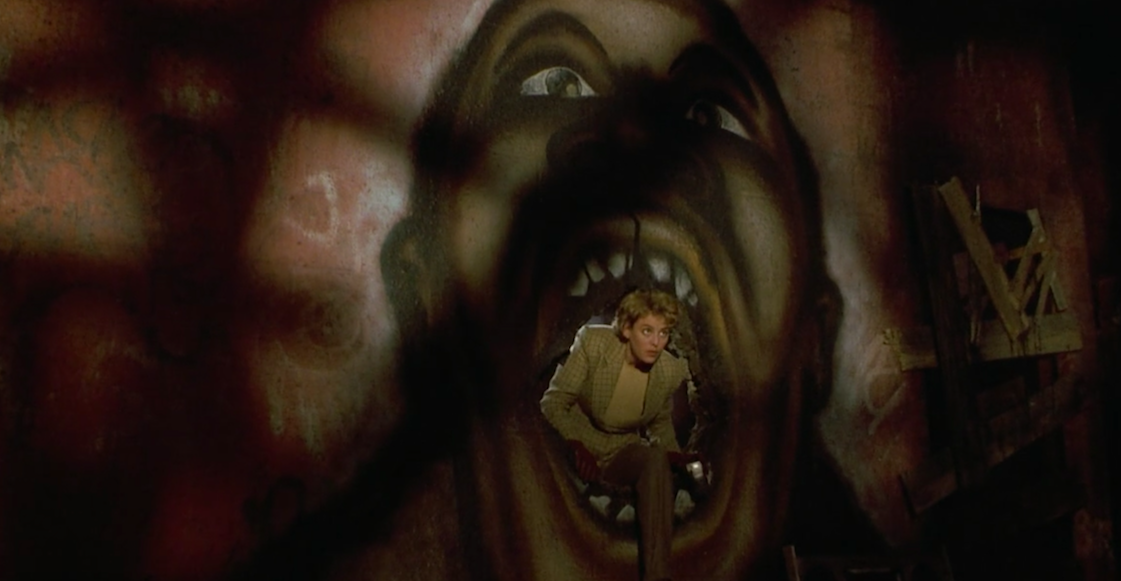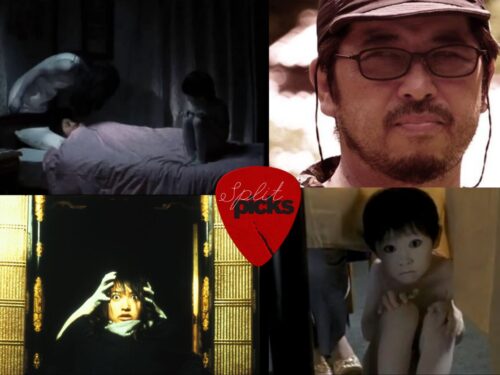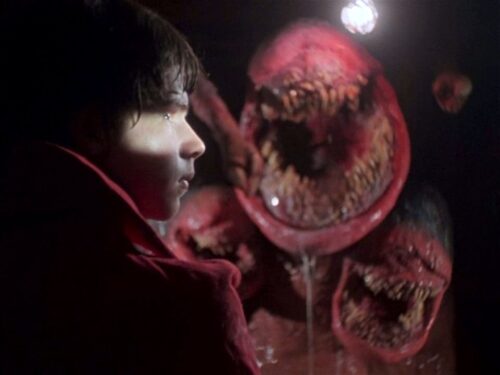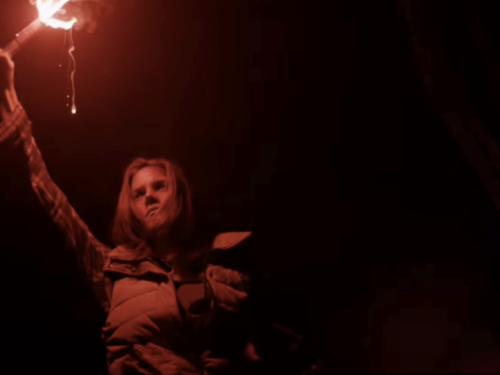Frankie Vanaria returns to the 1992 original and explores why it remains a timeless and challenging vision of how America relates to urban legends
Bernard Rose’s Candyman (1992) is a hypnotic film, and the source of its horror isn’t just the gore and shock that it provides, although these both abound in the cult classic. The most piercing horror of Candyman lies in what the film reveals about the fantasies that breathe life into and structure the worldview of white, American liberalism and academia.
In the film, the titular character is a spirit who haunts Chicago and is closely tied to the Cabrini-Green housing projects. As one character explains, the “Candyman” is a myth that originated from the murder of a Black man in the 1800s. He was the son of a slave who had amassed a fortune for himself, and was able to provide the boy with the education and social opportunities that he needed to advance in society. Graced by this fortune, he grew to become a great portraiture artist, which led to him falling in love and fathering a child with a wealthy white woman. Her angry father dispatched a lynch mob after the artist, who chased him to the area that became Cabrini-Green. There, they sawed off his right hand and coated his body with honeycomb so that nearby bees would sting him to death. Finally, the perpetrators burned the mutilated corpse and spread his ashes around the land that the housing projects were later built on.
In the present day of the film, Chicago graduate students Helen Lyle (Virginia Madsen) and Bernie Walsh (Kasi Lemmons) are writing their thesis on the Candyman myth, which for them amounts to little more than an urban legend. In one of the film’s first scenes, Helen is amused by the story that an undergrad tells her: A young woman named Clara (Marianna Elliott) is visited by the local bad boy, Billy (Ted Raimi), while babysitting an infant. Clara intends to sleep with Billy, something she will not do with her boyfriend, and she initiates sex while in the bathroom. She entreats Billy to summon the Candyman, which is done by looking into the mirror and calling his name five times. Billy obliges while fondling Clara’s breasts, but stops at four. Clara sends Billy downstairs and says “Candyman” for the fifth time, which, as the undergrad tells it, results in the brutal murder of Clara and the baby that she was watching. Billy is supposedly driven to madness.
What makes this moment in the film so interesting is that it revolves around white characters who are enticed by the danger of the Candyman myth, but they do not take it very seriously. When Clara initiates the ritual, neither she nor Billy seem to know who the Candyman is, beyond him having a hook for a hand. The undergrad telling the story to Helen seems to believe that this murder did happen, but she believes it in a way that all myths or urban legends are believed: It’s more fun to imagine that this really happened than not, but there’s no real desire to explore the origins of the Candyman story. For her part, Helen does not seem especially invested in what the undergrad tells her, and we might presume that this is because she has heard countless versions of this story before. Helen’s and Bernie’s interest is not in the dangerousness of the Candyman myth, but its social importance to the people who are familiar with it. The stories of this ghastly figure are nothing more to them than a source of academic curiosity and study.
As one might imagine, this situation changes. Helen becomes obsessed with the Candyman legend. She and Bernie learn of a woman who was murdered in her home in Cabrini-Green, one of many murders attributed to the Candyman. The graduate students go to Cabrini, where they are greeted coldly by its African American residents, who suspect them to be police. Bernie, herself an African American woman, is uncomfortable with Helen’s determination to see the murder site and collect information, suggesting her sensitivity to the prospect of exploiting the pain of the community; this is something Helen does not seem at all concerned with. They meet Anne-Marie McCoy (Vanessa Williams), the murder victim’s neighbor and a single mother of a baby named Anthony. Anne-Marie opens up to Helen and Bernie about not wanting her son to become a member of the gang that runs Cabrini-Green when he gets older. Helen returns to the projects on her own to continue the investigation, but she is attacked by a gang member who calls himself the Candyman. This results in his eventual arrest and brings an end to the supposed legend when news breaks of the attack. Displeased with how his legend has been abandoned, the real Candyman (Tony Todd) appears to Helen. He hypnotizes her and informs her that he will continue killing to prove that his legend is true. He also tells Helen of his desire for her, which, in her trance, she seems to also feel for him.
For the rest of the film, Helen is found responsible for a series of crimes. She awakens from the Candyman’s trance in Anne-Marie’s kitchen, covered in blood after supposedly having decapitated the woman’s rottweiler and possibly taken her baby. Later on, the Candyman visits Helen in her apartment when her husband, Trevor (Xander Berkeley), is out and slits her throat. Helen wakes up again to find Bernie murdered in her home, which makes her the lead suspect. She’s placed in psychiatric care, from which she escapes and returns to Cabrini-Green. At the film’s climax, she finds baby Anthony hidden in a pyre built of garbage and attempts to rescue him, at which point the Candyman returns. The pyre is set ablaze, with the residents of the neighborhood, including Anne-Marie, gathered to watch. The Candyman will not allow Helen to take the baby and leave, wanting all of them to be together as spirits, but she stabs him with a flaming piece of wood and pulls herself and Anthony out of the fire. The baby survives, but Helen does not and becomes the new “Candyman.”
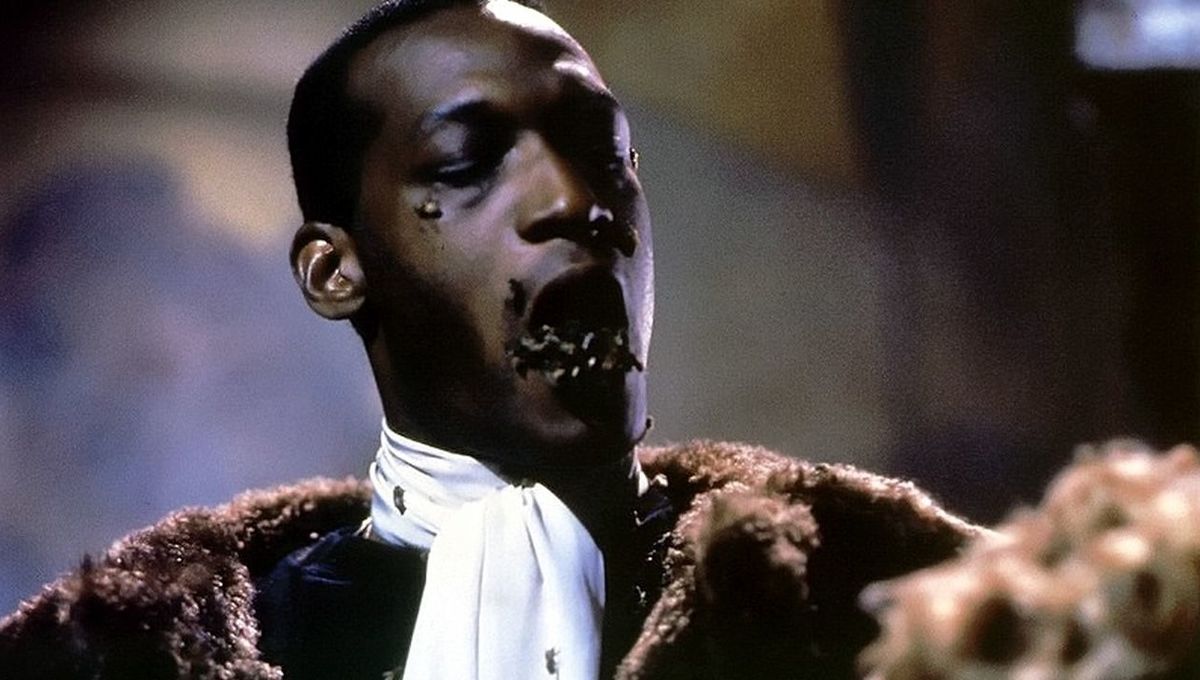
Candyman is a beautiful and haunting horror film, but what makes it lasting is its insight into white liberal attitudes towards race in America, represented by Helen and her relationship to the Candyman. The legend of how the spirit came to be is tragic, but it is clearly fascinating to Helen. The Candyman’s desire for Helen is presented as a return of his original desire for the white woman he fell in love with and who loved him. Here, it is hard to say that Helen “loves” the Candyman, but she is totally captured by him. Or perhaps it’s more accurate to say she identifies with the white woman from the legend. That is, Helen feels to the Candyman parallels the transgression of what the white woman felt for the African American man who would be murdered.
Obviously, by the early 1990s, when the film takes place, social attitudes toward interracial relationships progressed significantly since the hate crime described by the legend of the Candyman. Nevertheless, Helen’s relationship with the Candyman is framed as being transgressive because of how dangerous this African American “man” is presented. The Candyman exists outside the normal social order. Unlike the gang leader who is wrongfully imprisoned for murders he did not commit, the Candyman cannot be subjected to abuse by the carceral system. Not only does this mean that the spirit cannot be stopped from killing, but he also cannot be stopped from pursuing his eternal love for Helen. Likewise, no outside party can stop Helen’s attraction to him (this spell is only broken when she decides to save the baby) or what are believed to be her murderous and psychotic impulses. It is not simply that Helen identifies with the woman in the legend, but also with the Candyman himself: She projects onto a certain fantasy of violence, both as a victim of a hate crime and as a perpetrator of countless murders.
As such, Candyman ingeniously dramatizes two fantasies that structure a liberal worldview. One is the image of the African American man as an eternally tragic character who is incapable of escaping the history of racial violence in the United States. As a ghost, the Candyman is the ideal expression of how this violence is not only history or memory, but continuously part of the present, which is why so many of his attacks are directed towards the residents of Cabrini-Green. For Helen, this tragedy clearly adds an element of authenticity to the Candyman legend that she had not ascribed to the myth, which we can see in her amusement at the undergraduate’s zealous narration of the babysitter story. In other words, Helen cannot be made to believe or fear the story of the Candyman until it is presented to her as a story where an African American man is the victim of a hate crime, and this primordial violence is what allows Helen to indulge herself in believing it. His story is one that she can consume from a safe moral distance, in that she sympathizes with his tragedy and also understands herself to be the “chosen” white person who is trusted enough for the Candyman to confide in. In other words, Bernard Rose clearly presents the myth and personage of the Candyman as things that Helen wants, and actually needs to believe, in order to feel a sense of purpose. And, crucially, this feeling of importance is predicated on a liberal understanding of African Americans as perennial victims, who self-identify to white people — as Anne-Marie does when talking about what it is like to live in Cabrini-Green — as living in misery. This, too, for the liberal Helen, is part of what allows her to feel a special connection to the story of the Candyman and the spirit’s victims in Cabrini.
The second, and closely related fantasy, is the deification of white liberalism that depends on a sort of identification with African Americans. As noted, by the end of the film, Helen becomes the new “Candyman.” When she saves Anthony from the burning pyre, she is burned to death in her act of self-sacrifice, baptized as it were, and reborn as a vengeful spirit. Helen was continuously frustrated by Trevor while she was alive. In their first scene, Helen confronts Trevor about two things: How he went against her and Bernie’s wishes and presented his oral folklore lecture before they finished collecting research from the students, and also how one of his students, with whom he has an affair, is clearly infatuated with him. She intimates that there must be some reason for that. Later on, at a dinner where Helen and Bernie are told the story of the Candyman by their condescending department chair, Trevor is unsupportive of his wife’s work while allowing the chair to talk down to the women about their research. Lastly, Helen learns of Trevor’s affair with his student when she escapes from the psychiatric institution and returns home. Helen is horrified that Trevor would lock her away so that he could be with this younger woman. All of these resentments and outrages toward Trevor build to the moment at the end of the film when a depressed Trevor, who is still with his girlfriend, calls out Helen’s name five times in front of the bathroom mirror, which prompts her to return and kill him.
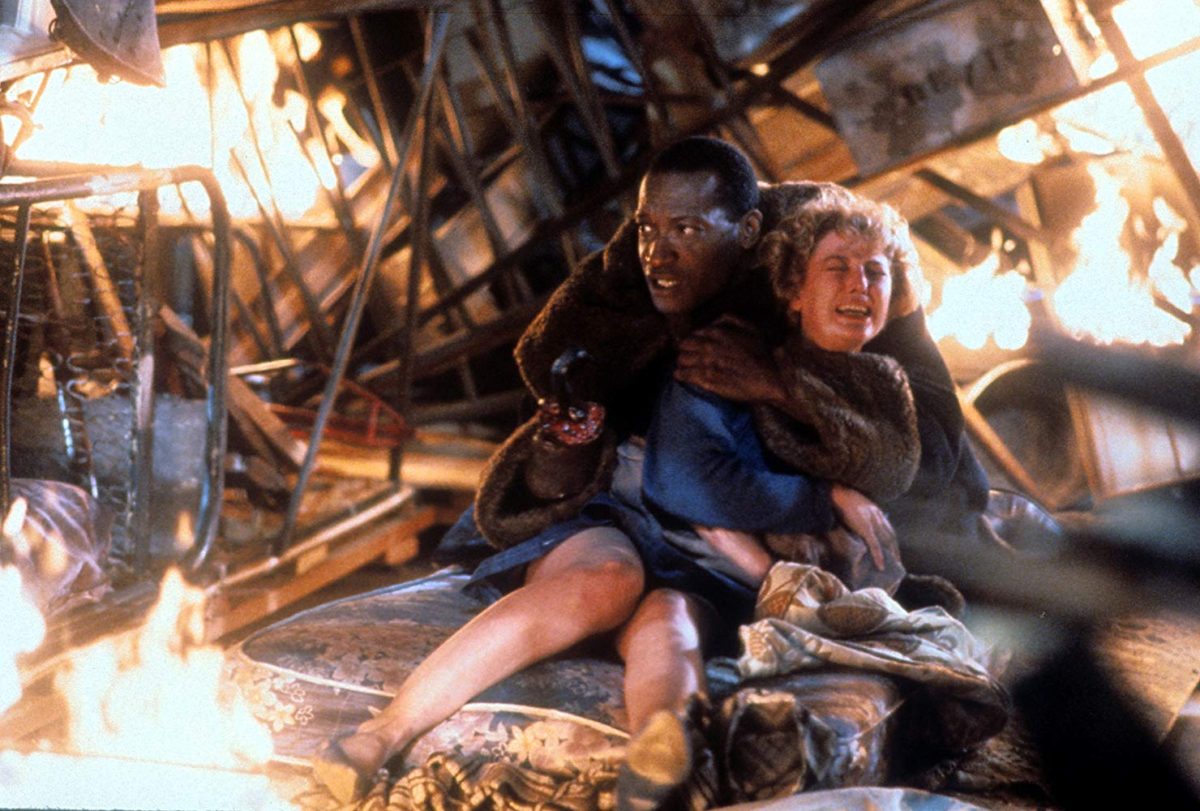
With this, Helen has not simply become a ghost; she is reborn in Candyman’s image. The suggestion here is that Helen identifies the misogyny that she has had to put up with as being, if not the same as the racial violence that a Black man suffered, the thing that defines her exclusion from white, male society. While living, Helen is never going to be accepted as equal to men, either in her relationship with Trevor or professionally. In this way, Helen’s transformation into a ghost is interesting as a metaphor for how she crosses racial and gender lines: As a spirit, she is not a white woman anymore, but the memory of one. She has taken on the identity of the African American spirit that so captured her attention, and which she can identify with as also being excluded from white society. In other words, the Candyman’s tragedy, because it registers to her as authentic (i.e. because of the racial violence associated with it) is alluring to Helen to the point that she adapts it to her own life and it becomes her new identity. Having suffered in her life as a dissatisfied wife and academic, Helen can continuously affirm her victimized identity as a vengeful spirit, and sort of perverse deity, for time eternal.
Earlier this year, Candyman was given a sequel, directed by Nia DaCosta, which adds to the lore established in the original. DaCosta updates the myth for contemporary audiences who are all too familiar with images of racial violence captured on the news and by social media. I will refrain from giving away too much about DaCosta’s sequel, except to say that it is an unnecessary and, frankly, uninteresting and cynical ploy to comment on the racial elements of the Candyman legend while also making it one about the empowerment of its Black characters. This is a perfectly fine thing to do. The problem is that DaCosta’s film doesn’t offer the sort of penetrating political insights that Rose’s original does. The sequel, instead, centers on platitudes about the African American experience — the very liberal fantasies that the original Candyman sought to present as horrifying. This only reaffirms just how timeless Bernard Rose’s original version is for its presentation of the specter of such violence in America.
Find the complete October Horror 2021 series here:
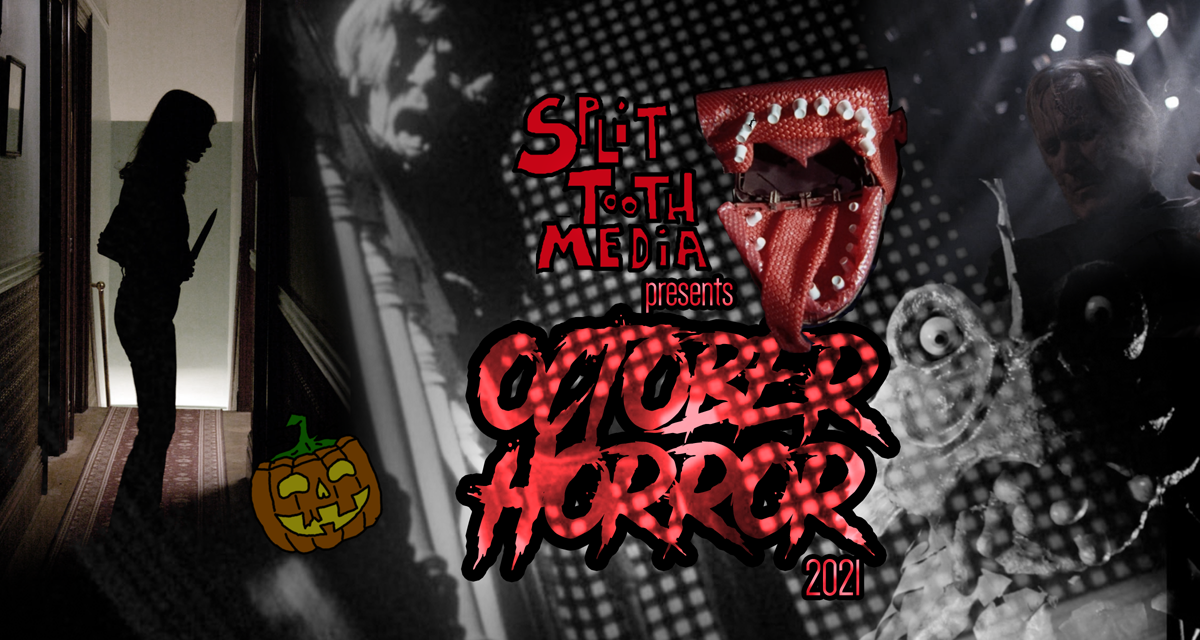
Purchase Candyman on Blu-ray from Amazon or Shout! Factory
Stream Candyman on Amazon Prime
(Split Tooth may earn a commission from purchases made through affiliate links on our site.)

